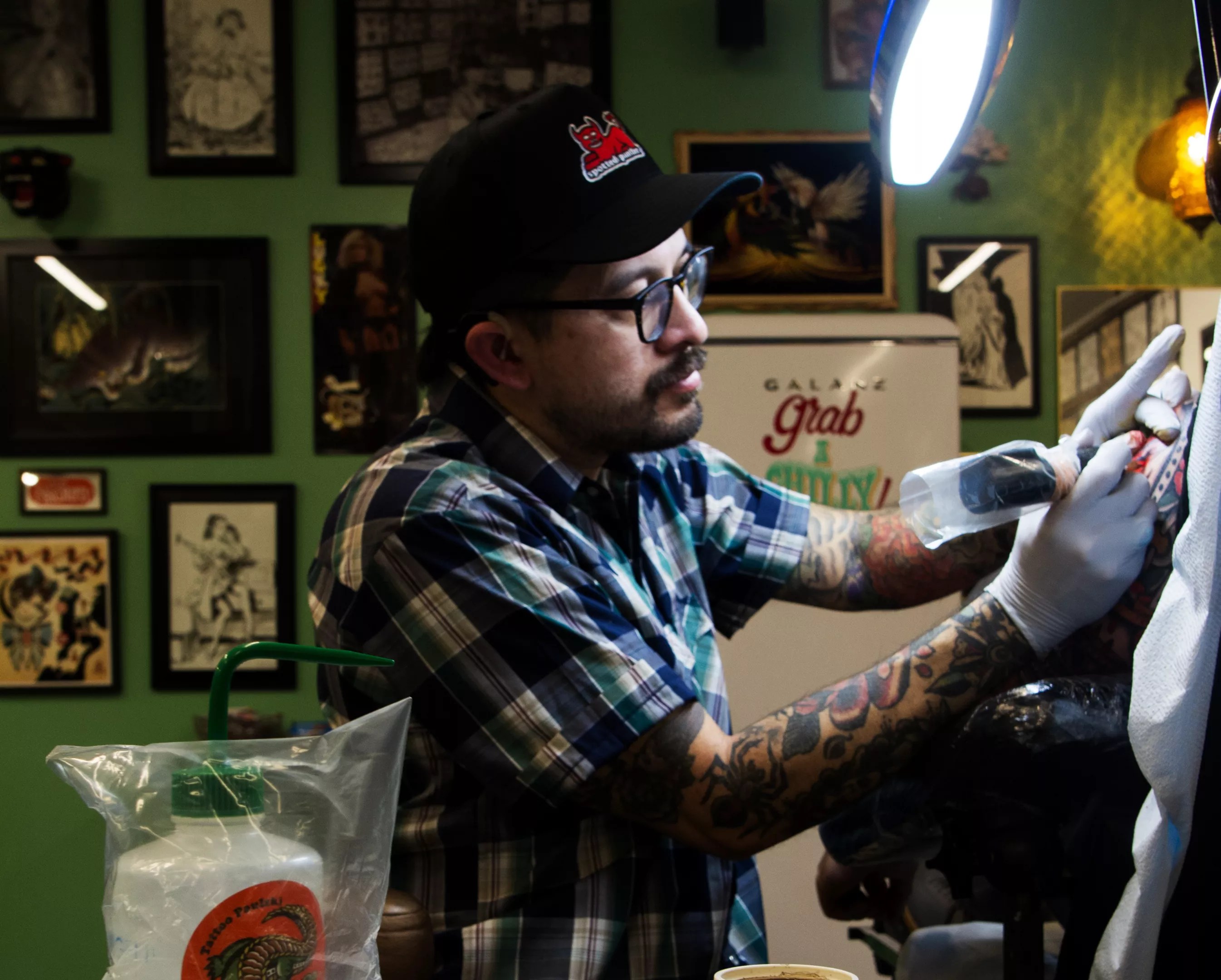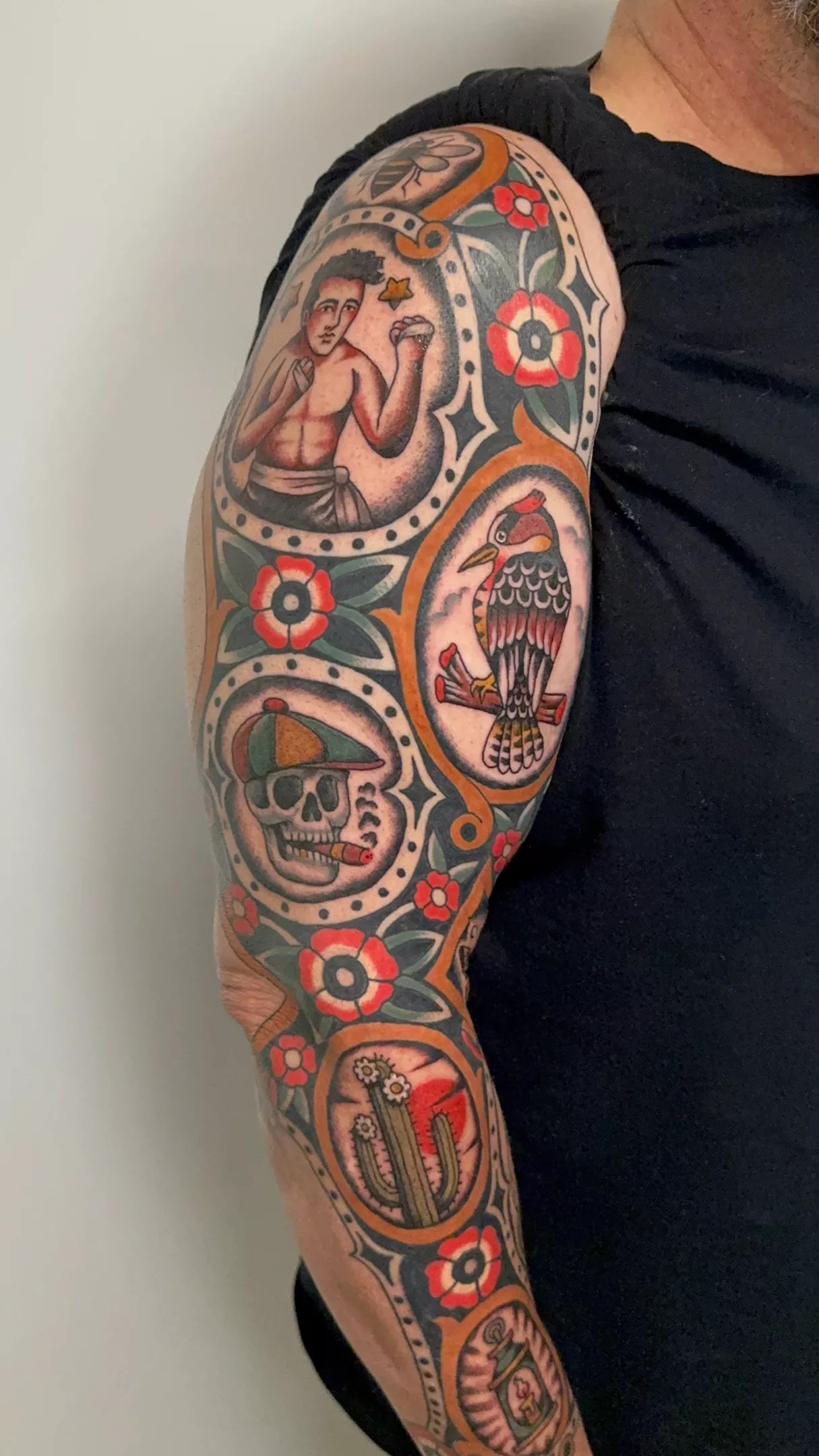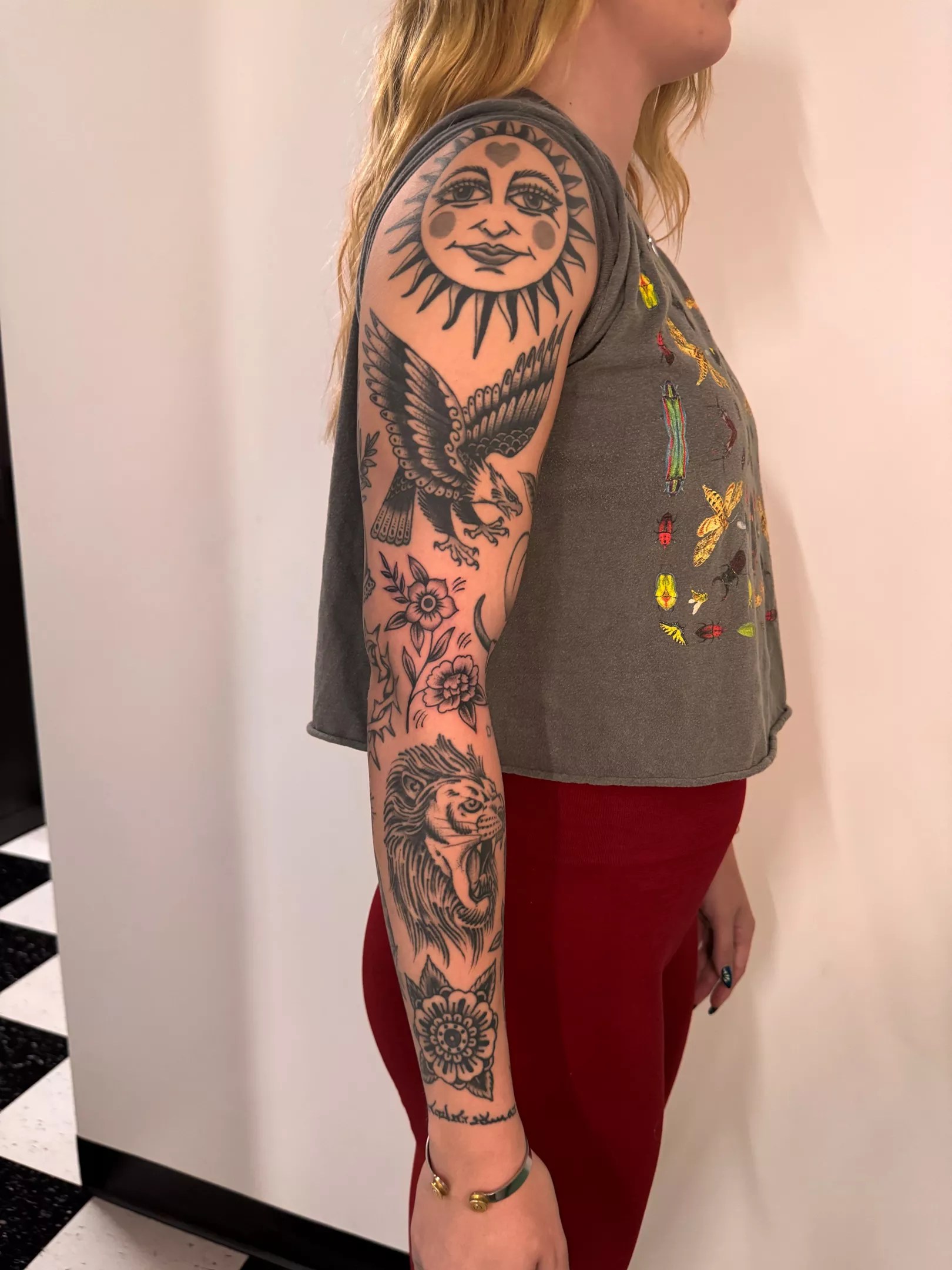
Angela RoseRed

Audio By Carbonatix
Phoenix tattoo artist Paulski describes his artistic style with one word: “Paulski.”
The veteran artist throws unexpected subject matter into a time machine to create custom American Traditional-style tattoos. His bold, hard-lined designs pay homage to artists of the past as he finds a balance between retro and modern-day perspectives.
“I read up on stories of old tattooers, early 1900s, and I tried to study their approach to tattooing,” he says. “Then I try to imagine (what would happen) if you take that individual and put them in today’s society. How would they use modern-day equipment, modern-day color, modern-day everything?”
For Paulski, who currently works out of the Spotted Panther Tattoo in north central Phoenix, his approach is a way to “carry on the torch” and honor those tattooers who paved the way. Other traditional style-based tattooers have taken a similar stance, but Paulski distinguishes himself by incorporating some contemporary elements into his designs while maintaining a traditional aesthetic.

Tattoo work by Paulski.
Courtesy of Paulski
As a born and raised Arizonan, he’s also a product of his environment.
“I’m inspired by indigenous art. I’m inspired by the deserts, the mountains, the cactuses, the whole thing,” he says. “And there’s so much to see and so much to do if you really spend the time to look.”
Observation plays a key role in Paulski’s process. It’s a skill sharpened by necessity, as he’s been deaf since a bout of spinal meningitis at the age of 1.
“Even though I’ve been deaf my whole life, I’m not deaf with a capital D. I wish I did have a better connection with the Deaf community, but I had a bad experience with Deaf culture when I was younger,” says Paulski, who now has a cochlear implant. “I was taught how to hear and speak, and the Deaf community at the time saw that as trying to fix something that’s not broken.”
The “Deaf (community) is a beautiful culture, beautiful language. Cochlear implants and hearing aids and everything were not that well developed in the ’80s and ’90s,” Paulski continues. “I was kind of shunned, so I tried to get in with hearing society. Along the way, I just knew that I would never be part of deaf culture, and I would never be part of hearing culture. So, in a way, I’m kind of stuck in limbo.”
Being deaf made Paulski aware of his differences early on, but it also helped him connect with others. He feels his background paved a way for him to interact with other “outsiders” through creativity – those who, like him, existed outside the mainstream. He began his art journey as a graffiti artist before attending the Art Institute for Computer Animation, which landed him work as a web developer. When the dot-com crash hit in the early 2000s, he spent his free time hanging around with graffiti artist friends who had transitioned into tattooing. This eventually led to him trading website design for tattoo apprenticeship.
Two decades later, Paulski continues to make connections and collaborates with clients to balance their ideas with the principles of a timeless tattoo design. Through it all, he enjoys knowing the art lives on beyond his tattoo machine.

Tattoo work by Paulski.
Courtesy of Paulski
“The tattoos I do, they get to go on adventures. They get sunburned. They travel overseas. Some of them last a long time. Some of them fade. I think it’s all cool,” Paulski says. “When I do a tattoo, sometimes these people are well-traveled. Some people never even leave town. Some go through breakups, marriages and have kids. The tattoo gets to see all of that.”
In a world increasingly affected by technology, the artist sees tattoos as a tangible way to interact with the world.
“ With the emergence of AI and everything all automated, it seems like connecting with humans is becoming less and less each year,” he says. “I mean, you can get a nice house, you can get a nice car, but those things can be taken away from you, or you can lose them. But tattoos, you pretty much take them with you to the end.”
Visit tattoopaulski.com for more info or to schedule a tattoo consultation.